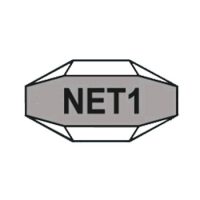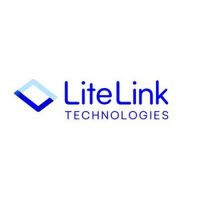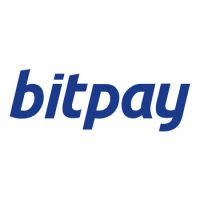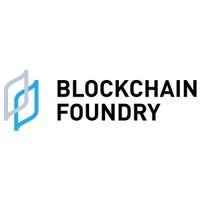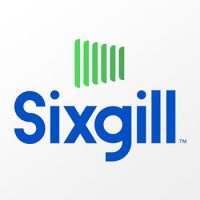Blockchain
VersaBank Reports Continued Strong Results for Second Quarter 2021, Highlighted By Record Net Income(3)

VersaBank (“VersaBank” or the “Bank”) (TSX: VB), a North American leader in business-to-business digital banking, as well as technology solutions for cybersecurity, today reported its results for the second quarter of 2021 ended April 30, 2021.
Financial Summary
|
(unaudited) |
As at or for the three months ended |
As at or for the six months ended |
|||||||||||||
|
April 30 2021 |
January 31 2021 |
April 30 2020 |
April 30 2021 |
April 30 2020 |
|||||||||||
|
(thousands of Canadian dollars except per share amounts) |
Change |
Change |
Change |
||||||||||||
|
Financial results |
|||||||||||||||
|
Revenue |
$ |
15,970 |
$ |
15,422 |
4% |
$ |
14,485 |
10% |
$ |
31,392 |
$ |
28,067 |
12% |
||
|
Cost of funding |
1.28% |
1.42% |
(10%) |
1.75% |
(27%) |
1.35% |
1.80% |
(25%) |
|||||||
|
Net interest margin |
2.96% |
2.86% |
3% |
3.08% |
(4%) |
2.91% |
3.01% |
(3%) |
|||||||
|
Core cash earnings(1)(2) |
7,940 |
7,278 |
9% |
7,096 |
12% |
15,218 |
14,181 |
7% |
|||||||
|
Core cash earnings per common share(1) |
0.38 |
0.34 |
11% |
0.34 |
11% |
0.72 |
0.67 |
8% |
|||||||
|
Net income |
5,744 |
5,290 |
9% |
5,149 |
12% |
11,034 |
10,290 |
7% |
|||||||
|
Net income per common share basic and diluted |
0.25 |
0.22 |
14% |
0.22 |
14% |
0.47 |
0.44 |
7% |
|||||||
|
Balance sheet and capital ratios |
|||||||||||||||
|
Total assets |
2,139,757 |
2,044,976 |
5% |
1,966,369 |
9% |
2,139,757 |
1,966,369 |
9% |
|||||||
|
Book value per common share(1) |
$ |
11.06 |
$ |
10.90 |
2% |
$ |
10.37 |
7% |
$ |
11.06 |
$ |
10.37 |
7% |
||
|
Common Equity Tier 1 (CET1) capital ratio |
12.52% |
12.48% |
0% |
13.50% |
(7%) |
12.52% |
13.50% |
(7%) |
|||||||
|
Total capital ratio |
18.89% |
14.58% |
30% |
15.85% |
19% |
18.89% |
15.85% |
19% |
|||||||
|
Leverage ratio |
10.46% |
11.40% |
(8%) |
11.48% |
(9%) |
10.46% |
11.48% |
(9%) |
|||||||
|
(1) Certain highlights include non-GAAP measures. See definitions under ‘Basis of Presentation’ in the Q2 2021 Management’s Discussion and Analysis. |
|||||||||
|
(2) Core Cash Earnings is calculated as pre-tax earnings less non-core operating income and expenses. |
Highlights for the Second Quarter of 2021
- Positive trends continue across all key financial metrics sequentially and substantially all key financial metrics year-over-year, as the Bank continued to lower its cost of funding, and continued to redeploy elevated cash balances (accumulated in mid-2020 in response to the uncertainty associated with the pandemic) into low-risk, higher yielding lending assets;
- Total revenue increased 10% year-over-year and 4% sequentially, to a record $16.0 million;
- Net income increased 12% year-over-year and 9% sequentially to a record3 $5.7 million;
- Core cash earnings increased 12% year-over-year and 9% sequentially to a record $7.9 million;
- Cost of funds decreased 47 bps, or 27%, year-over-year and 14 bps, or 10%, sequentially to a record 1.28%;
- Net interest margin decreased, 12 bps, or 4% year-over-year, however, increased 10 bps, or 3%, sequentially, to 2.96%, which was dampened by atypically high cash balances following the Bank’s decision amidst the uncertainty near the beginning of the COVID-19 pandemic to increase cash balances out of an abundance of caution. As it has since the third quarter of fiscal 2020, the Bank continued to redeploy its cash balances to higher interest earning loans in the second quarter of 2021, which is expected to contribute to a higher net interest margin;
- A recovery of credit loss provisions in the amount of $312,000 compared to a provision for credit losses in the amount of $420,000 for the second quarter of 2020 and a provision for credit losses in the amount of $57,000 for the first quarter of 2021; and
- Loans increased 2%, or $36 million, to a record $1.83 billion sequentially, driven primarily by growth in the Point-of-Sale Loan and Lease portfolio.
- Announced its intention to launch a revolutionary, highly-encrypted digital deposit offering, VCAD, with each VCAD unit representing a one-dollar deposit with the Bank. Facilitated by state-of-the-art blockchain technology, VCAD is easily transferable, enabling it to be used as a digital currency, with the highest level of stability and security amongst digital currencies available today, with each VCAD represented by a deposit with an investment-grade issuer;
- On April 30, 2021 the Bank completed a private placement of non-viability contingent capital (“NVCC”) compliant fixed to floating rate subordinated notes payable, (“the Notes”) in the principal amount of USD $75.0 million (CAD $92.1 million). Egan-Jones Ratings Company assigned the Notes and the Bank investment grade ratings of “A- and “A”, respectively;
- Also on April 30, 2021, the Bank redeemed all of its outstanding Non-Cumulative Series 3 preferred shares (NVCC) using cash on hand (aggregate of $16.8 million);
- Net income from wholly-owned subsidiary, DRT Cyber Inc.’s (“DRT Cyber”) penetration testing business, Digital Boundary Group, one of North America’s premier information technology security assurance services firms, increased more than 60% year-over-year for the five-month period since its acquisition in November 2020, and
- DRT Cyber released its new email privacy compliance platform, RAVEN, the first and only fully automated and integrated solution that provides complete compliance with all major global anti-SPAM legislation, as an external beta to a select group of customers prior to full market release.
Management Commentary
“VersaBank’s second quarter was once again highlighted by a number of record results across our core Digital Banking operations, which were complemented by the profitable contribution of our Cyber-Security subsidiary, resulting in the highest quarterly net income in our history3,” said David Taylor, President and CEO, VersaBank. “It is especially encouraging that, even amidst a period of strong loan growth year-to-date, our strong performance was dampened by our still higher than typical cash balances, as well as the pandemic-related restrictions, which impacted loan origination in both our Point-of-Sale and Commercial Real Estate lending businesses.”
“Importantly, our results were once again reflective of the earnings power and significant growth potential of our Digital Banking strategy – addressing unmet needs in banking through innovative solutions based on our proprietary software platform through a highly efficient, partner-based model. With the additional capital raised through our subordinated note offering in April, opportunities to continue to lower our cost of funds, our Point-of-Sale and Commercial Lending businesses poised to benefit from the relaxation of pandemic-related restrictions and the launch of our Instant Mortgage offering on the horizon, our strong performance in the first half of fiscal 2021 positions VersaBank for an even better second half, and a return to our track record of strong year-over-year growth in annual profitability.”
Mr. Taylor added, “As our core Digital Banking operations delivered record results, the second quarter was also marked by strong progress in our DRT Cyber business. We are now nearly six months with Digital Boundary Group as part of our Cyber-Security business. Net income has grown substantially year-over-year and we are making steady progress in our strategy to capitalize on the significant business development opportunities from the combined teams to drive continued long-term growth, as both business and government grapple with an increasing number of high-consequence cyber-attacks that can be defended through regular penetration testing.”
|
(3) |
Excluding an $8.8 million one-time, non-cash gain resulting from the recognition of a Deferred Tax Asset upon the amalgamation of Pacific & Western Bank and PWC Capital Inc. in the first quarter of 2017. |
Update on Management of COVID-19 Impact
As a digital bank with a low-risk business-to-business, partner-based model, VersaBank remains well insulated from many of the negative influences of COVID-19 and our staff continues to work remotely leveraging our fully functional Work-From-Home solution which was a natural and seamless evolution of the Bank’s branchless, technology-driven model. Despite the fact that we currently have no loans on our balance sheet that are subject to payment deferrals, no impaired loans and no loans in arrears our credit risk department continues to operate at a heightened level of awareness, ensuring that our origination and underwriting practices remain highly disciplined and focused. Further, the Bank continues to maintain liquidity levels that are higher than normal, or more specifically higher than pre-COVID-19 levels, however; management expects that liquidity will normalize prior to the end of fiscal 2021. Despite the business and operational challenges imposed by the pandemic, the Bank continues to focus on enhancing Core Cash Earnings performance by concentrating on niche markets that support more attractive pricing for its products and by leveraging its diverse deposit gathering network which provides efficient access to a range of low-cost deposit sources in order to maintain a lower cost of funds.
Financial Review
Net Income – Net income for the quarter was $5.7 million, or $0.25 per common share (basic and diluted), compared to $5.3 million, or $0.22 per common share (basic and diluted) last quarter and $5.1 million, or $0.22 per common share (basic and diluted), for the same period a year ago. The quarter-over-quarter trend was a function primarily of higher revenue and a recovery of credit loss provisions, offset partially by higher non-interest expenses. The year-over-year trend was a function primarily of higher revenue, including strong non-interest income contribution from DBG and recovery of credit loss provisions, offset partially by higher non-interest expense. Year-to-date net income and EPS were $11.0 million and $0.47 respectively, compared to $10.3 million and $0.44 for the same period a year ago as a function primarily of higher revenues and a recovery of credit loss provisions, offset partially by higher non-interest expense.
Net Interest Margin – Net interest margin (or spread) for the quarter was 2.96% compared to 2.86% last quarter and 3.08% for the same period a year ago. The quarter-over-quarter trend was a function primarily of the continued redeployment of cash into higher yielding lending assets over the course of the current quarter and lower cost of funds. The year-over-year trend was a function primarily of higher yields earned in the comparative period as a function primarily of higher fees recognized on the negotiated, early repurchase of a portfolio of loan and lease receivables by one of the Bank’s point of sale origination partners and lower yields earned on floating rate lending assets attributable primarily to the accommodative monetary policy established by the Bank of Canada early in the spring of 2020, offset partially by lower cost of funds. Year-to-date net interest margin was 2.91% compared to 3.01% for the same period a year ago.
Net Interest Income – Net interest income for the quarter was $15.1 million compared to $14.4 million last quarter and $14.5 million for the same period a year ago. The quarter-over-quarter and year-over-year trends were a function primarily of higher interest income earned on the Bank’s Commercial Real Estate lending portfolio, redeployment of cash into higher yielding lending assets and lower interest expense attributable largely to growth in the operating accounts that the Bank makes available to Canadian insolvency professionals. Year-to-date net interest income was $29.5 million compared to $28.0 million for the same period a year ago.
Non-Interest Expenses – Non-interest expenses for the quarter were $8.3 million compared to $8.1 million last quarter and $6.9 million for the same period a year ago. The quarter-over-quarter trend was a function primarily of the consolidation of the operating expenses of Digital Boundary Group, offset partially by lower salary and benefits expense in the current period. The year-over-year trend was a function primarily of the consolidation of the operating expenses of Digital Boundary Group, increased salary and benefits expense, and investments in the Bank’s corporate development initiatives. Year-to-date non-interest expenses were $16.4 million compared to $13.6 million for the same period a year ago.
Provision for/Recovery of Credit Losses – The Bank recognized a recovery of credit loss provisions for the quarter in the amount of $312,000 compared to a provision for credit losses in the amount of $57,000 last quarter and a provision for credit losses in the amount of $490,000 for the same period a year ago. The quarter-over-quarter and year-over-year trends were a function primarily of changes in the forward-looking information used by the Bank in its credit risk models in the current quarter as well as a recovery of a prior period write off in the amount of $116,000. The year-over-year trend also reflects net remeasurements of expected credit losses attributable to the impact of planned refinements to specific real estate asset loan and credit data inputs introduced in the third quarter of fiscal 2020.
Core Cash Earnings – Core cash earnings for the quarter were $7.9 million or $0.38 per common share (basic and diluted), compared to $7.3 million or $0.34 per common share (basic and diluted) last quarter and $7.1 million or $0.34 per common share (basic and diluted) for the same period a year ago. The quarter-over-quarter and year-over-year trends were a function primarily of the factors set out above.
Capital – At April 30, 2021, VersaBank’s Total regulatory capital was $333 million compared to $251 million last quarter and $246 million a year ago. The quarter-over-quarter and year-over-year trends were a function primarily of the completion of a private placement of 5% non-viability contingent capital compliant fixed to floating rate subordinated notes in the principal amount of USD $75 million and higher core cash earnings, offset partially by the redemption of the Bank’s outstanding Non-cumulative Series 3 Preferred Shares. The year-over-year trend was also impacted by the regulatory adjustment attributable to the goodwill and intangible assets acquired from DBG. At April 30, 2021, VersaBank’s CET1 capital ratio was 12.52%, compared 12.48% last quarter and 13.50% a year ago. The quarter-over-quarter and year-over-year trends were a function of retained earnings growth, tax provision recoveries related to the Bank’s deferred tax asset, and changes to the Bank’s risk-weighted asset balances and composition. The year-over-year trend also reflects the addition of goodwill and intangible assets acquired via the purchase of DBG and the inclusion of eligible expected credit loss allowance amounts related to the transitional arrangements pertaining to the capital treatment of expected loss provisioning as set out by the Office of the Superintendent of Financial Institution (OSFI).
Credit Quality — Gross impaired loans at April 30, 2021 were $nil, compared to $6.5 million a year ago. The prior year’s balance was comprised of a single loan which was repaid in full in the fourth quarter of 2020. The Bank’s allowance for expected credit losses, or ECL at April 30, 2021 was $1.6 million compared to $1.8 million in the first quarter and $2.4 million a year ago. The quarter-over-quarter and year-over-year trends were a function primarily of changes in the forward-looking information used by the Bank in its credit risk models in the current quarter. The year-over-year trend also reflects net remeasurements of expected credit losses attributable to the impact of planned refinements to specific real estate asset loan and credit data inputs introduced in the third quarter of fiscal 2020.
VersaBank’s Provision for Credit Losses (PCL) ratio continues to be one of the lowest in the industry, reflecting the very low risk profile of the Bank’s lending portfolio, enabling it to generate superior net interest margins by offering high-value deposit and lending solutions that address unmet needs in the banking industry through a highly efficient partner model.
FINANCIAL HIGHLIGHTS
|
(unaudited) |
for the three months ended |
for the six months ended |
||||||||
|
April 30 2021 |
April 30 2020 |
April 30 2021 |
April 30 2020 |
|||||||
|
($CDN thousands except per share amounts) |
||||||||||
|
Results of operations |
||||||||||
|
Interest income |
$ 21,649 |
$ |
22,688 |
$ |
43,164 |
$ |
44,854 |
|||
|
Net interest income |
15,095 |
14,476 |
29,469 |
28,033 |
||||||
|
Non-interest income |
875 |
9 |
1,923 |
34 |
||||||
|
Total revenue |
15,970 |
14,485 |
31,392 |
28,067 |
||||||
|
Provision for (recovery of) credit losses |
(312) |
490 |
(255) |
282 |
||||||
|
Non-interest expenses |
8,342 |
6,899 |
16,429 |
13,604 |
||||||
|
Core cash earnings* |
7,940 |
7,096 |
15,218 |
14,181 |
||||||
|
Core cash earnings per common share* |
$ |
0.38 |
$ |
0.34 |
$ |
0.72 |
$ |
0.67 |
||
|
Net income |
5,744 |
5,149 |
11,034 |
10,290 |
||||||
|
Income per common share: |
||||||||||
|
Basic |
$ |
0.25 |
$ |
0.22 |
$ |
0.47 |
$ |
0.44 |
||
|
Diluted |
$ |
0.25 |
$ |
0.22 |
$ |
0.47 |
$ |
0.44 |
||
|
Dividends paid on preferred shares |
$ |
542 |
$ |
542 |
$ |
1,084 |
$ |
1,084 |
||
|
Dividends paid on common shares |
$ |
528 |
$ |
528 |
$ |
1,056 |
$ |
1,056 |
||
|
Yield* |
4.24% |
4.83% |
4.26% |
4.81% |
||||||
|
Cost of funds* |
1.28% |
1.75% |
1.35% |
1.80% |
||||||
|
Net interest margin* |
2.96% |
3.08% |
2.91% |
3.01% |
||||||
|
Return on average common equity* |
9.20% |
8.64% |
8.73% |
8.62% |
||||||
|
Core cash return on average common equity* |
13.08% |
12.29% |
12.40% |
12.26% |
||||||
|
Book value per common share* |
$ |
11.06 |
$ |
10.37 |
$ |
11.06 |
$ |
10.37 |
||
|
Efficiency ratio* |
52.24% |
47.63% |
52.33% |
48.47% |
||||||
|
Return on average total assets* |
1.02% |
0.98% |
0.98% |
0.99% |
||||||
|
Gross impaired loans to total loans* |
0.00% |
0.41% |
0.00% |
0.41% |
||||||
|
Provision (recovery) for credit losses as a % of average loans* |
(0.07%) |
0.12% |
(0.03%) |
0.04% |
||||||
|
as at |
||||||||||
|
Balance Sheet Summary |
||||||||||
|
Cash and securities |
$ |
272,428 |
$ |
340,326 |
$ |
272,428 |
$ |
340,326 |
||
|
Loans, net of allowance for credit losses |
1,829,776 |
1,594,968 |
1,829,776 |
1,594,968 |
||||||
|
Average loans* |
1,811,750 |
1,631,844 |
1,742,343 |
1,594,628 |
||||||
|
Total assets |
2,139,757 |
1,966,369 |
2,139,757 |
1,966,369 |
||||||
|
Average assets* |
2,092,367 |
1,910,567 |
2,041,821 |
1,875,875 |
||||||
|
Deposits |
1,679,273 |
1,591,732 |
1,679,273 |
1,591,732 |
||||||
|
Subordinated notes payable |
94,392 |
4,885 |
94,392 |
4,885 |
||||||
|
Shareholders’ equity |
247,366 |
248,313 |
247,366 |
248,313 |
||||||
|
Capital ratios* |
||||||||||
|
Risk-weighted assets |
$ |
1,763,424 |
$ |
1,551,796 |
$ |
1,763,424 |
$ |
1,551,796 |
||
|
Common Equity Tier 1 capital |
220,740 |
209,495 |
220,740 |
209,495 |
||||||
|
Total regulatory capital |
333,161 |
245,984 |
333,161 |
245,984 |
||||||
|
Common Equity Tier 1 (CET1) ratio |
12.52% |
13.50% |
12.52% |
13.50% |
||||||
|
Tier 1 capital ratio |
13.29% |
15.39% |
13.29% |
15.39% |
||||||
|
Total capital ratio |
18.89% |
15.85% |
18.89% |
15.85% |
||||||
|
Leverage ratio |
10.46% |
11.48% |
10.46% |
11.48% |
||||||
|
* This is a non-GAAP measure. See definition under ‘Basis of Presentation’ in the Q2 2021 Management’s |
|||||||||
|
Discussion and Analysis. |
|||||||||
Forward-Looking Statements
The statements in this press release that relate to the future are forward-looking statements. By their very nature, forward-looking statements involve inherent risks and uncertainties, both general and specific, many of which are out of our control. Risks exist that predictions, forecasts, projections, and other forward-looking statements will not be achieved. Readers are cautioned not to place undue reliance on these forward-looking statements as several important factors could cause actual results to differ materially from the plans, objectives, expectations, estimates and intentions expressed in such forward-looking statements. These factors include, but are not limited to, the strength of the Canadian economy in general and the strength of the local economies within Canada in which we conduct operations; the effects of changes in monetary and fiscal policy, including changes in interest rate policies of the Bank of Canada; changing global commodity prices; the effects of competition in the markets in which we operate; inflation; capital market fluctuations; the timely development and introduction of new products in receptive markets; the impact of changes in the laws and regulations pertaining to financial services; changes in tax laws; technological changes; unexpected judicial or regulatory proceedings; unexpected changes in consumer spending and savings habits; the impact of the COVID-19 pandemic and our anticipation of and success in managing the risks implicated by the foregoing. For a detailed discussion of certain key factors that may affect our future results, please see our annual MD&A for the year ended October 31, 2020.
The foregoing list of important factors is not exhaustive. When relying on forward-looking statements to make decisions, investors and others should carefully consider the foregoing factors and other uncertainties and potential events. The forward-looking information contained in this document and the related management’s discussion and analysis is presented to assist our shareholders and others in understanding our financial position and may not be appropriate for any other purposes. Except as required by securities law, we do not undertake to update any forward-looking statement that is contained in this document and the related management’s discussion and analysis or made from time to time by the Bank or on its behalf.
Blockchain
ONFA Fintech USA Partners with Metti Capital Funding to Accelerate Blockchain Banking and DeFi Expansion

ONFA Fintech USA – feat image
Blockchain
Blocks & Headlines: Today in Blockchain – May 16, 2025

A Pivotal Moment for Blockchain’s Many Frontiers
Today’s briefing arrives at a crossroads in blockchain’s evolution. From AI-driven Layer-1 grant programs to gamified resets in Web3, from supply-chain trust revolutions to exchange-driven token incentives, and high-stakes regulatory leadership shifts, the industry is charting new territory on multiple fronts. As builders, investors, and policymakers navigate this shifting terrain, five stories stand out for their potential to reshape blockchain’s trajectory:
-
Lightchain Protocol AI unveils a $150,000 developer grant program to onboard top builders in AI × blockchain.
-
Blockchain gaming experiences its lowest engagement of 2025, signaling a sector reset toward sustainability.
-
Norwegian Seafood Council research highlights blockchain’s trust-building power in global supply chains.
-
MEXC Exchange announces the Einstein (EIN) listing on July 20, 2025, buoyed by a $50 million rewards event.
-
Summer Mersinger, a US CFTC commissioner, is tapped as CEO of the Blockchain Association, marking a pivotal regulatory turn.
In this op-ed–style briefing, we’ll unpack each development, explore its implications for blockchain, cryptocurrency, Web3, DeFi, and NFTs, and assess how these narratives intersect to define today’s momentum.
1. Lightchain Protocol AI’s $150K Grant: Catalyzing Decentralized Intelligence
What happened: On May 15, 2025, Lightchain Protocol AI—a Layer-1 blockchain optimized for AI workloads—launched its Developer Grant & Ecosystem Incentive Program, pledging up to $150,000 in total funding to on-board teams building dApps, explorers, wallets, analytics dashboards, DeFi protocols, NFT platforms, and AI-powered modules on its network. Grants are milestone-based (up to $5,000 per milestone), accompanied by technical support, co-marketing, and ecosystem visibility. Source: Bitcoin News
Why it matters: Lightchain’s move underscores the growing fusion of AI and blockchain. By allocating resources to builders at the intersection of these technologies, the protocol signals that the next wave of innovation will hinge on intelligent smart contracts, federated learning coordination, and on-chain decision-making. For developers, this grant lowers barriers to entry and emphasizes sustainable, value-driven growth over token speculation.
> “We’re seeking impactful projects that align with Lightchain AI’s goal of bridging AI and blockchain—everything from AI prediction markets to compute marketplaces.” > — Lightchain Protocol AI Core Team
Implications:
-
DeFi & NFTs: Expect AI-augmented lending protocols and NFT platforms with dynamic metadata driven by on-chain models.
-
Ecosystem Growth: Lightchain’s aggressive grant strategy may spur competitors (e.g., Ethereum layer-2s) to bolster their own builder incentives.
-
Governance & Sustainability: The milestone-based approach aligns funding with tangible progress, a model DeFi DAOs may increasingly adopt for resource allocation.
Source: Bitcoin News
2. Blockchain Gaming’s 2025 Low: A “Reset” Toward Quality
What happened: According to Crypto.news, blockchain gaming saw daily active wallets dip to 4.8 million in April 2025—a 10% month-over-month decline and the lowest point of the year for Web3 gaming. Share of the DApp ecosystem for gaming fell to 21%, now tied with DeFi, while AI projects surged to 16% of on-chain activity. Funding also plunged nearly 70% from March to $21 million in April, though Arbitrum Gaming Ventures deployed $10 million from its $200 million fund to support titles like Wildcard, XAI Network, and Proof of Play. Source: Crypto.news
> “Capital is harder to secure, but that’s not necessarily bad. Weak projects are falling away, and funds are flowing into builders laying the groundwork for the next generation of blockchain games.” > — Sara Gherghelas, DappRadar Analyst
Why it matters: The downturn reflects a market recalibration from token-centric models toward user engagement, game mechanics, and interoperability—key for mainstream adoption. High-profile missteps (e.g., Square Enix shelving Symbiogenesis, Sega’s experimental launch of KAI: Battle of Three Kingdoms) contrast with enduring partnerships like Ubisoft + Immutable’s Might & Magic card game.
Implications:
-
DeFi and Gaming Convergence: As DeFi’s share remains steady, expect crossover innovations (e.g., on-chain staking integrated into gameplay).
-
Investor Focus: Sustainable tokenomics over ‘yin-yang’ hype; capital will favor projects with robust retention metrics and revenue models.
-
NFT Utility: Gaming’s reset may accelerate evolution of NFTs beyond collectibles into dynamic, utility-driven assets.
Source: Crypto.news
3. Deepening Trust in Seafood with Blockchain Transparency
What happened: Perishable News reported on May 15, 2025, that the Norwegian Seafood Council found 89% of consumers desire more information on seafood sourcing. Producers are piloting decentralized blockchain solutions to trace products “sea to shop floor,” sharing immutable data on species, harvest location, handling, and quality checks to reassure ethically conscious buyers. Source: Perishable News
Why it matters: While most blockchain discourse orbits finance and gaming, supply-chain applications represent a mass-market use case for Web3. Immutable provenance data combats fraud, illegal fishing, and mislabelling—an urgent concern as global seafood consumption climbs.
Implications:
-
Consumer Engagement: Brands adopting on-chain traceability can premium-price products by verifying sustainability standards, fair labor practices, and environmental impact.
-
DeFi Integration: Tokenized incentives could reward ethical producers or create staking mechanisms for supply-chain stakeholders.
-
Broader Web3 Adoption: Success in seafood may catalyze blockchain tracking in agriculture, pharmaceuticals, and luxury goods.
Source: Perishable News
4. MEXC’s Einstein (EIN) Listing & $50 Million Rewards Event
What happened: PR Newswire announced on May 16, 2025, that MEXC, a leading global crypto exchange, will list the Einstein (EIN) token on July 20, 2025 (UTC). To celebrate, MEXC has launched a $50 million EIN rewards event, offering incentives through trading competitions, referral bonuses, staking pools, and community tasks. Source: PR Newswire
Why it matters: Large-scale rewards events can drive short-term volume spikes and social engagement, but they also test community loyalty and tokenomics viability. EIN’s positioning as a “science-minded” utility token in educational and research partnerships adds thematic depth to what might otherwise be a routine exchange listing.
Implications:
-
Trading & Community Growth: Expect surges in trading volume, potentially setting new ATHs for MEXC’s platform metrics.
-
DeFi Crossplay: EIN holders may see integration into DeFi protocols for governance, liquidity mining, and educational grants.
-
Regulatory Watch: Large-scale token events continue to attract scrutiny over securities classifications and promotional compliance.
Source: PR Newswire
5. Summer Mersinger Becomes CEO of the Blockchain Association
What happened: Gadgets360 reported that on May 14, 2025, the Blockchain Association confirmed that Summer Mersinger, currently a commissioner at the US Commodity Futures Trading Commission (CFTC), will step down on May 30 and begin as the Association’s CEO on June 2. Mersinger has championed balanced, consumer-focused digital asset rules and will spearhead advocacy for fit-for-purpose legislation alongside US regulators. Source: Gadgets360
> “Summer’s knowledge of how elected officials think through complex questions will be vital as we await next steps on stablecoin and market structure bills.” > — Blockchain Association
Why it matters: The appointment bridges regulatory expertise and industry advocacy at a moment when Congress is eyeing stablecoin frameworks and broader crypto oversight. Mersinger’s shift signals a blurring of lines between government and industry, with potential to accelerate law-making and foster public-private collaboration.
Implications:
-
Policy Acceleration: Expect renewed momentum on stablecoin legislation, DeFi disclosures, and market-structure rules by August 2025, per administration timelines.
-
Industry Confidence: Firms may feel emboldened to innovate under clearer regulatory signals, supporting growth in DeFi, NFT marketplaces, and tokenized asset offerings.
-
Global Alignment: US-led regulatory frameworks often influence EU and APAC regimes—this leadership change could ripple through the international policy landscape.
Source: Gadgets360
Conclusion: Five Threads Weaving Tomorrow’s Blockchain Fabric
Today’s headlines paint a multifaceted portrait of blockchain’s ongoing maturation:
-
Ecosystem Incentives: Grant programs like Lightchain’s signal a builder-first ethos, turbocharging AI × blockchain synergy.
-
Quality Over Hype: Gaming’s dip reflects a necessary market reset, steering capital to sustainable, engagement-driven projects.
-
Real-World Utility: Supply-chain transparency demonstrates blockchain’s power beyond finance, enhancing consumer trust.
-
Tokenomics in Motion: Exchange listings and rewards events underscore the ever-evolving interplay between liquidity, community, and utility.
-
Regulatory Convergence: Leadership moves like Mersinger’s appointment highlight the tightening feedback loop between policymakers and the Web3 sector.
As blockchain, cryptocurrency, Web3, DeFi, and NFTs continue to intersect, today’s developments underscore a pivotal shift: the industry is moving from speculative frontiers to pragmatic, real-world applications—backed by funding, governance, and policy frameworks that prioritize longevity and trust. Keep these threads in mind as we watch the next chapters unfold.
The post Blocks & Headlines: Today in Blockchain – May 16, 2025 appeared first on News, Events, Advertising Options.
Blockchain
Saudi Arabia Loan Aggregator Market Report 2025: Retail Digital Payments Hit 70% as Tech Adoption Transforms Saudi Financial Services – Competition, Forecast & Opportunities to 2030
Saudi Arabian Loan Aggregator Market
-

 Blockchain Press Releases6 days ago
Blockchain Press Releases6 days agoBullish partners with the Gibraltar Government and GFSC to pioneer world’s first crypto clearing regulation
-

 Blockchain Press Releases4 days ago
Blockchain Press Releases4 days agoFintica AI and Mima Wallet Announce Strategic Partnership and Launch Joint Venture, Fintica Crypto Ltd
-

 Blockchain6 days ago
Blockchain6 days agoBlocks & Headlines: Today in Blockchain – May 12, 2025 | Rootstock, Zimbabwe Carbon Registry, Fastex, 21Shares, The Blockchain Group
-

 Blockchain4 days ago
Blockchain4 days agoBDM Digital Initiates Promising Dialogue with Stanford Law School in Pursuit of Strategic Partnerships in Silicon Valley
-

 Blockchain3 days ago
Blockchain3 days agoBlocks & Headlines: Today in Blockchain – May 15, 2025 (BTC’s Push, Pi Network Fund, Stablecoin Levers, JPM Pilot, OKX × Man City)
-

 Blockchain Press Releases7 days ago
Blockchain Press Releases7 days agoBybit Introduces BOB to P2P: Bolivian Traders Can Now Buy, Sell in Local Currency and Earn Commissions
-
Blockchain3 days ago
Wen Acquisition Corp Announces the Pricing of $261,000,000 Initial Public Offering
-
Blockchain3 days ago
Mercurity Fintech’s Subsidiary Grows Cross-Border Business Advisory Services with New Asia-Pacific Healthcare Client Engagement



















